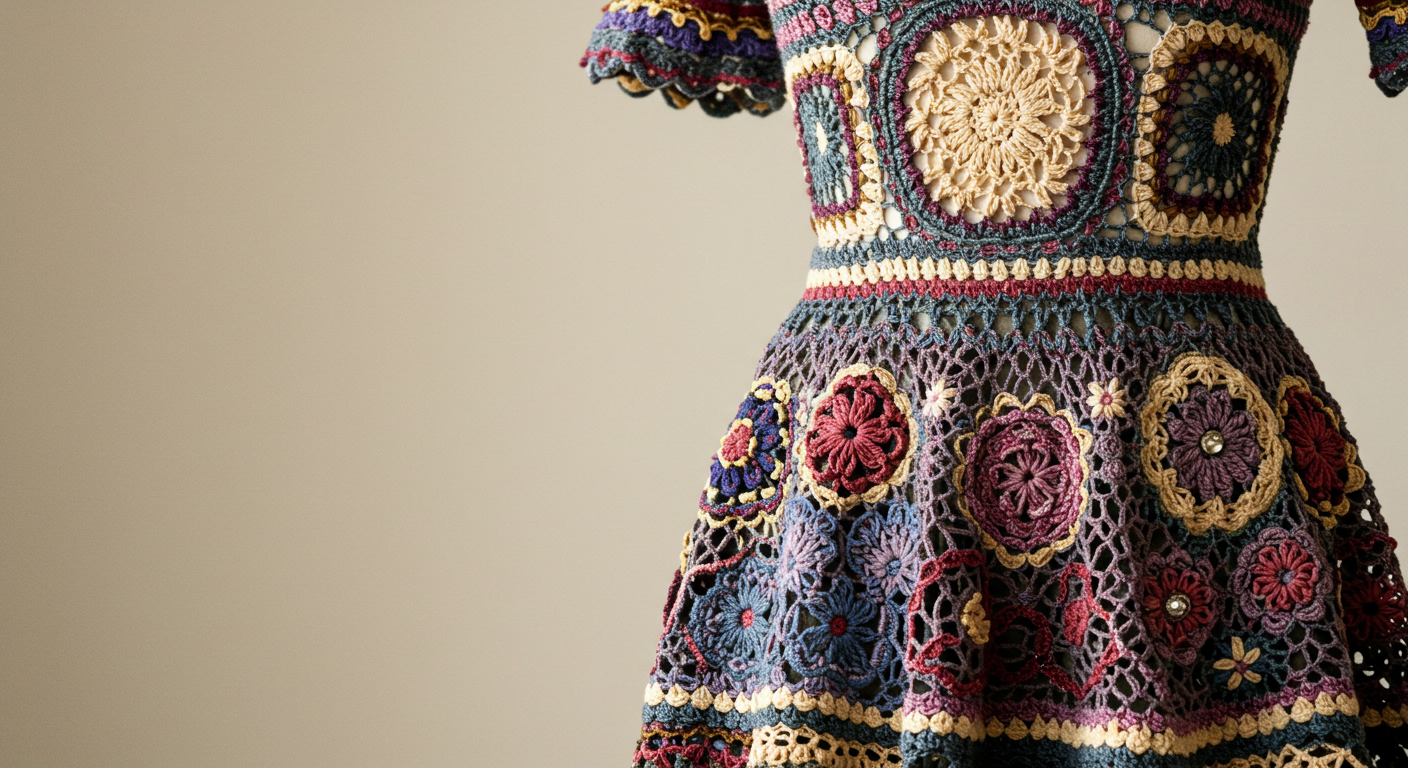LIFESTYLE
Everything Smart Buyers Need to Know About Used Honda Pilot

If you’re in the market for a spacious, reliable, and family-friendly SUV, the used Honda Pilot is one of the best choices available. Known for its comfort, practicality, and durability, the Pilot has been a top pick among midsize SUVs for nearly two decades. Buying a used Honda Pilot allows drivers to enjoy the features of a modern family SUV at a more affordable price, without compromising on quality.
In this detailed guide, we’ll cover everything you need to know about the used Honda Pilot—its history, performance, features, pros and cons, and helpful tips for purchasing the right one.
A Brief History of the Honda Pilot
Honda introduced the Pilot in 2003 as its first midsize crossover SUV designed primarily for the North American market. Built on a unibody platform, it offered the comfort of a car with the space and utility of a traditional SUV. Over the years, the Pilot has gone through multiple generations:
-
First Generation (2003–2008): Focused on family utility with three rows of seating and V6 power.
-
Second Generation (2009–2015): Larger and boxier, with improved towing capacity and technology upgrades.
-
Third Generation (2016–2022): Sleeker design, advanced safety features, and upgraded interior comfort.
-
Fourth Generation (2023–present): Latest redesign with more space, tech, and rugged styling.
When buying a used Honda Pilot, you’ll likely be shopping from the second and third generations, which offer an excellent balance of affordability and modern features.
Why Choose a Used Honda Pilot?
1. Reliability
Honda vehicles are well-known for their dependability, and the Pilot is no exception. With proper maintenance, many Pilots easily surpass 200,000 miles.
2. Affordability
Compared to brand-new models, a used Honda Pilot costs significantly less while still offering premium features and solid performance.
3. Spacious Interior
The Pilot is one of the few midsize SUVs with true three-row seating, making it ideal for families and group travel.
4. Strong Resale Value
Honda vehicles hold their value well. Even when buying used, you’re investing in a vehicle that won’t depreciate as rapidly as some competitors.
5. Advanced Features
Depending on the trim, used Pilots often include features like navigation, heated seats, advanced driver-assist systems, and rear entertainment options.
Performance and Engine Options
The Honda Pilot has consistently been powered by a 3.5-liter V6 engine, known for smooth performance and efficiency. Here’s what you can expect from different model years:
-
Horsepower: Typically ranges from 250 to 280 hp, depending on generation.
-
Transmission: Older models come with a 5-speed or 6-speed automatic, while newer ones may include a 9-speed automatic.
-
Fuel Economy: Averages around 18–20 mpg city and 25–27 mpg highway.
-
Towing Capacity: Most used Honda Pilots can tow up to 3,500 pounds (or 5,000 pounds with AWD and proper equipment).
This balance of power and efficiency makes the Pilot suitable for both city driving and long-distance road trips.
Interior Comfort and Features
One of the strongest selling points of the used Honda Pilot is its family-friendly interior.
-
Seating Capacity: Up to 8 passengers with three rows of seating.
-
Cargo Space: With all seats up, you get around 16 cubic feet, but folding down rows expands it to over 80 cubic feet.
-
Technology: Depending on the trim, you’ll find features like touchscreen infotainment, Bluetooth, Apple CarPlay, Android Auto, and navigation.
-
Comfort: Higher trims include leather seats, heated and ventilated front seats, tri-zone climate control, and panoramic sunroofs.
Even older models feel comfortable and practical, making them great choices for families.
Safety and Driver Assistance
Honda has a reputation for prioritizing safety, and the Pilot reflects that. Many used Honda Pilot models, especially from 2016 onward, come equipped with Honda Sensing®, a suite of driver-assist features such as:
-
Collision Mitigation Braking System™
-
Road Departure Mitigation
-
Adaptive Cruise Control
-
Lane Keeping Assist
The Pilot consistently earns high safety ratings, making it one of the safest used SUVs for families.
Trim Levels and Options
When buying a used Honda Pilot, you’ll find different trims offering various levels of features. Common trims include:
-
LX: The base model with standard features, perfect for budget buyers.
-
EX / EX-L: Adds upgraded infotainment, leather seating, and power-adjustable seats.
-
Touring: Includes navigation, rear entertainment systems, and premium sound.
-
Elite: Top-tier with luxury touches like ventilated seats, panoramic roof, and all-wheel drive.
Knowing which trim suits your needs helps narrow your search for the best used Pilot.
Pros of Buying a Used Honda Pilot
-
Reliable V6 engine with proven performance
-
Spacious three-row seating with excellent cargo space
-
Strong resale value compared to competitors
-
Comfortable ride with family-friendly features
-
Excellent safety ratings
Cons to Consider
-
Fuel economy is average compared to hybrid SUVs
-
Larger size can make city driving and parking more difficult
-
Older models may lack modern infotainment or advanced safety features
-
Some owners report transmission issues in certain years (notably early 9-speed automatics)
How Much Does a Used Honda Pilot Cost?
Pricing depends on the model year, mileage, trim, and condition. On average:
-
2009–2013 models: $7,000 – $13,000
-
2014–2016 models: $13,000 – $20,000
-
2017–2019 models: $20,000 – $30,000
-
2020–2022 models: $30,000 – $40,000
Checking local listings will give you the most accurate idea of current prices.
Tips for Buying a Used Honda Pilot
1. Check the Vehicle History Report
Always review reports for accidents, title status, and maintenance history.
2. Inspect the Transmission
Some used Pilots have reported transmission issues. Test drive the vehicle and pay attention to shifting smoothness.
3. Review Maintenance Records
A well-maintained Pilot can last many years, so ensure it has regular oil changes, brake service, and timing belt replacements (for older models).
4. Consider Certified Pre-Owned (CPO)
A CPO Honda Pilot comes with warranty coverage and has passed a thorough inspection, giving you extra peace of mind.
5. Negotiate Smartly
Used SUVs often have room for negotiation. Compare local listings to ensure you get a fair deal.
Competitors to the Used Honda Pilot
While the Honda Pilot is an excellent choice, you may also want to consider alternatives:
-
Toyota Highlander: Reliable with hybrid options for better fuel efficiency.
-
Ford Explorer: Sportier styling and powerful engine options.
-
Chevrolet Traverse: Offers more interior space in some trims.
-
Kia Telluride / Hyundai Palisade: Newer rivals with luxury-like interiors.
Comparing these helps confirm whether the Pilot fits your specific needs.
Maintenance and Longevity
A used Honda Pilot can easily last over 200,000 miles if maintained properly. Key maintenance tips include:
-
Regular oil and filter changes
-
Transmission fluid changes every 30,000–60,000 miles
-
Timing belt replacement (on older models)
-
Brake inspections and replacements
-
Tire rotations and alignments
Keeping up with maintenance ensures your Pilot runs smoothly for years to come.
Conclusion
The used Honda Pilot remains one of the best midsize SUVs on the market for families, commuters, and adventurers alike. With its blend of spaciousness, comfort, reliability, and safety, it’s a strong value option compared to buying new.
Whether you need a dependable daily driver, a road trip-ready SUV, or a safe family hauler, the Honda Pilot delivers. By considering model years, trims, pricing, and maintenance history, you can find the perfect used Pilot that fits both your lifestyle and your budget.
If you’re searching for a vehicle that balances practicality with long-term dependability, a used Honda Pilot deserves a spot at the top of your list.
ENTERTAINMENT
The Enchanting World of the Faerie Festival in Neopets: A Celebration of Magic and Merriment

For over two decades, Neopets has captivated millions of players with its vibrant virtual world, filled with whimsical creatures, engaging games, and exciting events. Among its most beloved annual celebrations is the Faerie Festival, a magical event where players can interact with Neopia’s faeries, earn rare rewards, and participate in exclusive activities.
This article explores the history, traditions, and gameplay features of the Faerie Festival, along with tips for making the most of this enchanting event. Whether you’re a seasoned Neopian or a curious newcomer, prepare to dive into the wonder of the Faerie Festival!
What is the Faerie Festival?
The Faerie Festival is a recurring Neopets event that celebrates Neopia’s faeries—mystical beings who bestow blessings, quests, and rare items upon players. During the festival, Faerieland becomes the center of activity, offering:
- Daily Faerie Quests (with a chance for stat boosts or rare items)
- Exclusive Items & Wearables (faerie-themed collectibles)
- Special Events & Games (mini-games, raffles, and storylines)
- Charity Corner (sometimes) – A donation-based rewards system
The festival typically runs for one to two weeks, often in September or October, aligning with the autumnal equinox—a time of magic and transformation in many mythologies.
The History of the Faerie Festival
Origins & Early Celebrations
The Faerie Festival has been a part of Neopets lore since the early 2000s, evolving from simple quest-based events into a full-fledged celebration with unique plots and rewards.
- 2004-2008: Early versions featured basic Faerie Quests with random rewards.
- 2010s: Expanded with Charity Corner, where players donated items for points.
- 2017-2019: Introduced Faerie Quest Event Boosts, increasing the frequency of rare quests.
- 2020-Present: Modern festivals include story-driven plots, avatar rewards, and NC Mall exclusives.
Notable Moments
- The Faerie’s Ruin Plot (2010) – A major storyline where Faerieland crashed into Neopia, reshaping the festival’s lore.
- The Return of the Grey Faerie (2015) – Once a rare encounter, she became a regular quest-giver, offering Fountain Faerie rewards.
- 2023 Revamp – Introduced a new quest system, allowing players to choose their rewards.
Key Features of the Faerie Festival
1. Daily Faerie Quests
Each day, players receive a free Faerie Quest from one of the following faeries:
| Faerie | Reward |
|---|---|
| Light Faerie | Temporary stat boosts |
| Dark Faerie | HP or defense increases |
| Fire Faerie | Strength boosts |
| Water Faerie | Movement or intelligence boosts |
| Air Faerie | Speed boosts |
| Earth Faerie | Defense or endurance boosts |
| Battle Faerie | Multiple stat increases |
| Grey Faerie | Chance for a Fountain Faerie dip (color change!) |
| Fountain Faerie | FREE PAINT BRUSH DIP! (Rare) |
Tips for Quests:
- Use the Shop Wizard (or Super Shop Wizard for premium users) to find quest items quickly.
- Stock up on cheap quest items (like Dung Jelly or Rainbow Dung) beforehand.
- Refresh at the Quest Board if you get a faerie you don’t want.
2. Charity Corner (When Available)
A fan-favorite sub-event where players donate items in exchange for points, redeemable for rare prizes.
- Best Items to Donate:
- R90-99 rarity items (like Codestones, Dubloons, or cheap plushies).
- Use the Jellyneo Item Database to find optimal donations.
3. Exclusive Festival Rewards
- Avatars (e.g., “Faerie Quest” avatar)
- Wearables (faerie wings, dresses, and backgrounds)
- Site Themes (festival-themed layouts)
- NC Mall Items (premium collectibles)
4. Festival Games & Activities
- Faerie Crossword Puzzles (Neopian Times contests)
- Caption Competitions (community engagement)
- Flash Games (RIP) – Previously, games like Faerie Bubbles were featured.
How to Maximize Your Faerie Festival Experience
1. Prepare in Advance
- Stock Up on Quest Items – Keep a stash of common quest request items.
- Save NP – Some quest items can be expensive (e.g., Snow Paint Brushes).
- Check Jellyneo/Neopets Reddit for event leaks and tips.
2. Prioritize the Best Quests
- Grey Faerie & Fountain Faerie are the most valuable (free color changes!).
- Battle Faerie is great for Battledome training.
- Ignore Light Faerie if you want permanent stat boosts.
3. Participate in All Activities
- Don’t skip Charity Corner (if available)—it’s a great way to clear inventory and earn rare stamps or wearables.
- Enter Neopian Times contests for bonus prizes.
4. Trade & Sell Festival Items
- Faerie-themed items inflate in price during the event—sell extras for profit!
- NC Mall items (like Faerie Cookies) are in high demand.
The Cultural Impact of the Faerie Festival
The Faerie Festival isn’t just an in-game event—it’s a beloved tradition that brings the Neopian community together.
- Fan Art & Creativity – Many players create faerie-themed artwork, stories, and Neopets customizations.
- Social Media Buzz – #FaerieFestival trends on Twitter/X, with players sharing their rewards and quests.
- Economic Shifts – The festival affects the Neopian economy, with item prices fluctuating based on quest demands.
Future of the Faerie Festival
With Neopets undergoing revamps (including the transition away from Flash), the Faerie Festival continues to evolve. Possible future additions:
- New Faeries (e.g., a “Cosmic Faerie” for space-themed rewards)
- Mobile-Friendly Quests (as Neopets expands on app platforms)
- More Interactive Plots (continuing the Faerieland storyline)
Conclusion
The Faerie Festival stands as one of Neopets’ most anticipated annual events, captivating players with its unique blend of magic, nostalgia, and rewarding gameplay. Since its inception, this enchanting celebration has evolved significantly, yet it consistently maintains its core charm that keeps the Neopian community coming back year after year.
At its heart, the festival offers players three primary attractions. First and foremost, it provides rare opportunities to interact with Neopia’s beloved faeries, each offering distinct benefits. For instance, the Fountain Faerie grants coveted paint brush dips, while the Battle Faerie delivers powerful stat boosts. Additionally, the event features exclusive items and wearables that can’t be obtained at any other time.
Beyond these immediate rewards, the festival serves several important functions within the Neopets ecosystem. On one hand, it stimulates the game’s economy as players trade festival-exclusive items. On the other hand, it fosters community engagement through shared experiences and collective goals. Moreover, the event often introduces new plot elements that advance Neopia’s overarching narrative.
For newcomers, the festival might seem overwhelming at first. However, with proper preparation, even beginners can maximize their rewards. Specifically, players should stock up on common quest items beforehand and familiarize themselves with each faerie’s potential rewards. Similarly, participating in all festival activities ensures no opportunities are missed.
While the event only lasts a limited time, its impact extends far beyond the festival period. The items obtained often retain significant value, and the stat boosts provide lasting advantages. Furthermore, the memories created and community connections formed during the festival endure throughout the year.
Ultimately, what makes the Faerie Festival truly special is how it encapsulates Neopets’ magical essence. Whether you’re a veteran player or just starting your Neopian journey, this event offers something valuable for everyone. As the festival continues to evolve, one thing remains certain: it will always be a highlight of the Neopets calendar, bringing wonder and excitement to players worldwide.
Mark your calendars for this year’s festival—adventure awaits in Faerieland!
ENTERTAINMENT
Taylor Swift Crochet Dress: A Fashion Icon’s Handmade Style

Taylor Swift has undoubtedly cemented her status as both a musical powerhouse and a fashion icon, with her style choices consistently capturing public attention. Among her most memorable fashion moments, her delicate crochet dress appearances stand out as particularly noteworthy. These outfits have not only sparked admiration from fans but also inspired crochet enthusiasts worldwide.
Interestingly, Taylor has incorporated crochet into various aspects of her wardrobe over the years. During her early career, she frequently opted for romantic, boho-chic designs that complemented her signature vintage aesthetic. Later, as her musical style evolved, so did her fashion choices, with crochet remaining a constant element in her looks.
Moreover, her Eras Tour costumes have taken crochet fashion to new heights. The intricate knit vests and folksy dresses she wears on stage perfectly mirror the nostalgic themes of her Folklore and Evermore albums. Similarly, her off-stage street style often features playful crochet pieces that showcase her ability to blend retro influences with modern trends.
Additionally, Taylor’s crochet looks have had a significant impact on fashion trends. Many fans have been inspired to recreate her outfits, leading to a resurgence in handmade fashion. Consequently, crochet patterns inspired by her style have become increasingly popular among crafters.
Furthermore, the sustainability aspect of crochet aligns perfectly with today’s eco-conscious fashion movement. Unlike fast fashion, handmade crochet pieces are durable and timeless, making them a smart choice for style-conscious individuals.
Ultimately, Taylor Swift’s crochet dresses demonstrate how classic craftsmanship can coexist with contemporary style. Whether she’s performing on stage or spotted out and about, her crochet looks consistently make a statement. As a result, she continues to influence both music and fashion, proving that handmade pieces can be just as glamorous as designer outfits.
In this article, we’ll explore:
- Taylor Swift’s most iconic crochet dress moments
- How to recreate her crochet dress style
- Free and paid crochet patterns inspired by her looks
- Why crochet fashion is making a comeback
- Tips for styling a crochet dress like Taylor
Taylor Swift’s Most Memorable Crochet Dress Outfits
1. The Boho-Chic White Crochet Dress (2010s Era)
During her Speak Now and Red eras, Taylor often embraced feminine, vintage-inspired fashion. One standout look was a white, lacy crochet dress paired with ankle boots and a flower crown, giving off a whimsical, festival-ready vibe.
Key Features:
- Flowy, knee-length silhouette
- Intricate floral crochet patterns
- Layered with a slip dress underneath
2. The Eras Tour’s Folklore-Inspired Crochet Vest Dress
For her Eras Tour, Taylor incorporated cottagecore aesthetics with a crochet vest dress reminiscent of her Folklore album’s woodsy, nostalgic themes.
Key Features:
- Oversized crochet knit vest
- Paired with a flowing cream dress
- Earthy, rustic tones
3. The Retro Granny Square Dress (2023 Street Style)
Taylor was spotted in a colorful granny square crochet dress, a nod to 1970s retro fashion. This look was a fun, playful twist on her usual romantic style.
Key Features:
- Bright, multicolored squares
- Fitted silhouette with puff sleeves
- Paired with vintage sunglasses
How to Crochet a Taylor Swift-Inspired Dress
Want to recreate Taylor’s crochet dress style? Here’s how to get started:
1. Choosing the Right Pattern
- For beginners: A simple A-line crochet dress with basic stitches (single/double crochet).
- Intermediate/Advanced: Try a lace crochet dress with intricate floral motifs.
- Free Patterns:
- Ravelry’s “Bohemian Crochet Dress” (similar to her white lace dress)
- Granny Square Dress Tutorial (YouTube, free step-by-step)
- Paid Patterns:
- Etsy’s “Taylor Swift Eras Tour Dress” (custom designs available)
2. Best Yarn for a Crochet Dress
- Cotton yarn (breathable, great for summer)
- Lightweight wool blend (for structure)
- Vintage-style thread yarn (for delicate lacework)
3. Stitch Techniques to Master
- Shell stitch (for a wavy, feminine hem)
- Filet crochet (for lace detailing)
- Granny squares (for a retro look)
Why Crochet Dresses Are Trending Again
Taylor Swift isn’t the only celebrity bringing crochet fashion back—here’s why it’s having a major revival:
1. Sustainable & Handmade Appeal
- Crochet is eco-friendly (less waste than fast fashion).
- Supports small businesses and artisans.
2. Vintage & Y2K Comeback
- The 70s boho and early 2000s crochet trends are resurging.
- Celebs like Hailey Bieber & Florence Pugh also wear crochet.
3. Perfect for Festival & Summer Fashion
- Breathable, lightweight, and Instagram-worthy!
How to Style a Crochet Dress Like Taylor Swift
1. Boho Romantic (Speak Now Era Vibes)
- Pair with: Ankle boots, layered necklaces, and a floppy hat.
- Hair: Loose waves or braids.
2. Cottagecore (Folklore Aesthetic)
- Layer with: A long slip dress and lace-up boots.
- Accessories: A woven bag and dainty gold jewelry.
3. Retro 70s (Granny Square Style)
- Wear with: Platform sandals and round sunglasses.
- Hair: Sleek middle part or voluminous curls.
Final Thoughts: Why Taylor’s Crochet Dress Style Is a Must-Try
Taylor Swift’s crochet dress moments beautifully demonstrate how handmade fashion can be both stylish and meaningful. Over the years, she has effortlessly incorporated crochet into her wardrobe, proving its versatility across different aesthetics. From breezy boho designs to cozy cottagecore looks, each outfit tells a story while making a sustainable fashion statement.
For starters, crochet offers endless creative possibilities. Beginners can experiment with simple stitches, while advanced crafters might tackle intricate lace patterns. Either way, the process allows for personalization, ensuring each piece feels special. Additionally, crochet aligns with slow fashion values, reducing waste compared to mass-produced clothing.
Moreover, Taylor’s crochet styles span multiple fashion eras. Her white lace dress from the early 2010s, for example, channels romantic boho vibes. Similarly, her Folklore-inspired ensembles highlight cottagecore charm with earthy tones and textured knits. Meanwhile, her recent granny square dress playfully nods to 70s retro trends.
Fortunately, recreating these looks is easier than it seems. Many free patterns exist online, from flowy summer dresses to fitted vests. When selecting materials, natural fibers like cotton work best for breathability and drape. Furthermore, styling options are limitless—pair with boots for a folksy feel or sandals for a carefree summer look.
Ultimately,
fashion inspires fans to embrace craftsmanship. Not only does handmade clothing carry sentimental value, but it also promotes eco-conscious choices. Whether you’re drawn to vintage charm or modern boho, crochet offers something for every Swiftie. So grab your hook and yarn, and let your creativity shine through!Want to start your own crochet dress? Check out the patterns mentioned and tag your creations #SwiftieCrochet!
FASHION
Calithe Watch: The Perfect Blend of Style, Innovation, and Functionality

In today’s crowded smartwatch market, the Calithe Watch emerges as a distinctive blend of timeless style and modern innovation. Designed for discerning users who refuse to compromise between form and function, this exceptional timepiece transcends basic timekeeping to become a sophisticated lifestyle companion.This comprehensive review will guide you through the Calithe Watch’s standout qualities, beginning with its premium craftsmanship and elegant aesthetics. We’ll examine its high-performance smart features that seamlessly integrate with your digital ecosystem, from health monitoring to mobile connectivity.
Beyond its technical specifications, we’ll analyze how the Calithe Watch compares to leading competitors in terms of design philosophy, battery efficiency, and value proposition. The evaluation will highlight its unique positioning in the market – offering luxury watch aesthetics without sacrificing smart functionality.Furthermore, we’ll identify the ideal users for this versatile device, from fashion-conscious professionals to health-focused tech enthusiasts. By the end of this exploration, you’ll understand why the Calithe Watch represents more than just another wearable – it’s a thoughtful investment in both style and substance that elevates everyday living.
Through detailed comparisons and feature breakdowns, we’ll demonstrate how this watch successfully bridges the gap between classic horology and contemporary smart technology, creating a truly balanced wearable experience.
1. The Evolution of Watches: From Analog to Smart
A Brief History of Timekeeping
The evolution of timepieces has transformed mechanical wonders into sophisticated smart wearables. The Calithe Watch perfectly marries these two worlds, blending traditional watchmaking craftsmanship with cutting-edge smart technology. Its elegant design preserves classic horological appeal while incorporating modern features like health tracking and notifications. This harmonious fusion creates a timepiece that satisfies both purists and tech enthusiasts alike. By respecting watchmaking heritage while embracing innovation, Calithe delivers a truly balanced wearable that honors the past while embracing the future of personal technology.
Why Smartwatches Are the Future
Today’s smartwatches offer must-have features like fitness tracking and mobile payments. The Calithe Watch elevates this experience by blending premium luxury design with advanced smart capabilities. It delivers all the modern conveniences users expect while maintaining elegant watchmaking aesthetics, creating a sophisticated wearable that excels in both form and function for discerning tech-savvy consumers.
2. Design & Craftsmanship: Where Elegance Meets Innovation
Sleek & Premium Build
- Materials: Stainless steel, ceramic, or titanium casing with sapphire glass for durability.
- Straps: Interchangeable bands (leather, silicone, or metal) for customizable style.
- Display: High-resolution AMOLED touchscreen with always-on functionality.
Aesthetic Appeal for Every Occasion
Whether you’re dressing up for a formal event or hitting the gym, the Calithe Watch adapts effortlessly to your lifestyle.
3. Advanced Features That Set Calithe Apart
Health & Fitness Tracking
- Heart rate monitoring
- Sleep analysis & stress tracking
- Built-in GPS for runs and cycling
- Blood oxygen (SpO2) sensor
Smart Connectivity
- Notifications (calls, texts, emails)
- Voice assistant integration (Google Assistant, Siri)
- NFC for contactless payments
- Music control & storage
Battery Life & Performance
The Calithe Watch stands out with an impressive 5-7 day battery life, eliminating the need for nightly charging. This extended power endurance makes it perfect for frequent travelers and busy professionals who need reliable, uninterrupted performance throughout their demanding schedules and adventures.
4. Calithe Watch vs. Competitors
| Feature | Calithe Watch | Apple Watch | Samsung Galaxy Watch |
|---|---|---|---|
| Design | Luxury, customizable | Sporty, modern | Futuristic, bold |
| Battery Life | 5-7 days | 1-2 days | 2-4 days |
| Health Tracking | Comprehensive (SpO2, stress, sleep) | Advanced (ECG, fall detection) | Robust (BP monitoring) |
| Price | Mid-range premium | High-end | Mid to high |
Why Calithe Wins? It balances affordability, battery life, and elegance better than most competitors.
5. Who Should Buy the Calithe Watch?
The Busy Professional
Stay connected without constantly checking your phone.
The Fitness Enthusiast
Track workouts, heart rate, and recovery seamlessly.
The Style-Conscious Individual
A watch that complements both casual and formal wear.
6. Where to Buy & Pricing
- Official Website: Best deals with warranty.
- Amazon & Best Buy: Often discounted during sales.
- Price Range: 199−349 (varies by model).
Conclusion: Is the Calithe Watch Worth It?
The Calithe Watch represents the ideal choice for anyone looking to upgrade their wearable technology or invest in their first high-quality smartwatch. First, it combines timeless elegance with modern functionality, making it suitable for both professional and casual settings. Additionally, its sleek, minimalist design ensures it complements any outfit, whether you’re attending a business meeting or hitting the gym.
Moreover, what truly sets the Calithe Watch apart is its impressive battery life. Unlike many competitors that require daily charging, this device lasts up to 7 days on a single charge, saving you time and hassle. Furthermore, its advanced health tracking features provide comprehensive insights into your wellbeing, including heart rate monitoring, sleep analysis, and blood oxygen levels.
In terms of performance, the watch delivers seamless connectivity. For instance, it syncs effortlessly with your smartphone, allowing you to receive notifications, control music, and even make contactless payments. Meanwhile, its durable sapphire glass and premium materials ensure long-term reliability, making it a worthwhile investment.
Another key advantage is its affordability compared to other luxury smartwatches. While brands like Apple and Samsung charge premium prices, the Calithe Watch offers similar features at a more accessible price point. Therefore, it provides exceptional value without compromising on quality.
Ultimately, whether you prioritize style, functionality, or health tracking, the Calithe Watch meets all these needs. Consequently, it stands as one of the most versatile smartwatches on the market today. Finally, with its blend of aesthetic appeal and cutting-edge technology, it’s clear why this timepiece is becoming a favorite among tech-savvy consumers. In summary, the Calithe Watch isn’t just a gadget—it’s a lifestyle upgrade that keeps pace with your every move.
Final Thought:
“A watch should do more than tell time—it should enhance your life. The Calithe Watch does just that.”
Would you wear the Calithe Watch?⌚
-

 NEWS3 months ago
NEWS3 months agoPolitical News: Key Global and Domestic Updates
-

 ENTERTAINMENT2 months ago
ENTERTAINMENT2 months agoTaylor Swift Crochet Dress: A Fashion Icon’s Handmade Style
-

 TECHNOLOGY1 month ago
TECHNOLOGY1 month agoUnraveling Orinpendex: Mysteries and Potential
-

 TECHNOLOGY3 months ago
TECHNOLOGY3 months agoRSSAwee: Unlocking the Future of Digital Connectivity
-

 TECHNOLOGY3 months ago
TECHNOLOGY3 months agoUnveiling iamnobody89757: The Enigma of Digital Identity
-

 TECHNOLOGY3 months ago
TECHNOLOGY3 months agoDGMNews.com: Revolutionizing Digital News in the Modern Era
-

 BLOG1 month ago
BLOG1 month agoUnraveling Iszlágiya: A Deep Dive into Its Essence
-

 HEALTH2 months ago
HEALTH2 months agoAIOTechnical.com: Innovating Health & Beauty with Advanced Tech
